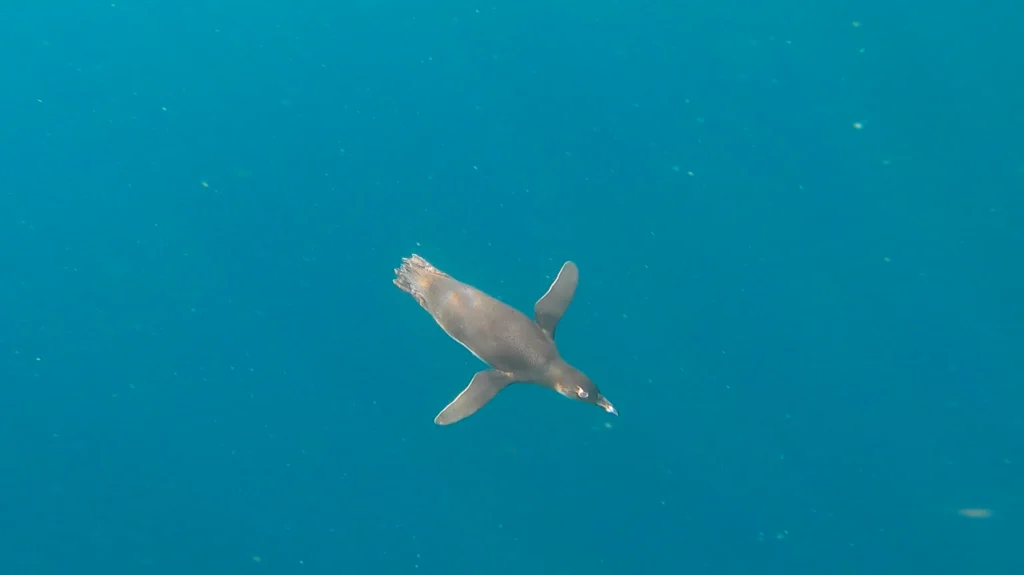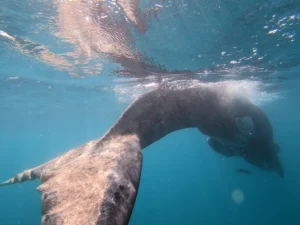Cape Town Freediving Clip Of The Week 4:
Recently, we have had great conditions. Winter really is the best time for exploring the ocean in False Bay! The water temperature went up to 17 degrees and this brought bait fish and yellowtail into the bay. It also sent large rafts of penguins south to Cape Point to hunt the bait fish. In the water a group of penguins is a ‘raft’ and on land they are a ‘waddle’. Pretty accurate. We were lucky to be in the water snorkeling when a raft of penguins with some playful juveniles in their ranks came past. We often encounter rafts of penguins passing near us when freediving at sites like Photographer’s Reef, D-frame and outer Spaniard Rock, but penguins usually don’t come near enough to freedivers and snorkelers to see them underwater. If you try to approach a raft of penguins (which you shouldn’t) they will shoot off before you get anywhere near them. This particular raft not only came close enough for us to film them underwater, but some of the juveniles playfully swam under and around us.
The African Penguin, also known as the Cape Penguin, South African Penguin and Jackass Penguin, is flightless like all other penguins alive today. Their Latin name Spheniscus Demersus roughly translates to ‘Plunging Wedge’. While quite awkward on land, these birds are amazing divers and have been recorded reaching depths of 130m and having a dive time of 275 seconds. On average though, they dive 25m for about 1 minute. As you can see in the video clip, they propel themselves in the water with their wings which act as flippers. They streamline their bodies with their feet tucked up behind their tails. They can reach speeds of up to 20km/h in the water, but usually cruise at around 4 to 7 km/h. On land they are slow, but some have been known to outrun a chasing marine biologist.
The African Penguin feeds mostly on fish and squid. Their primary diet consists of small pelagic fish like pilchards, anchovies, horse mackerel and herring. Adults weigh up to 3.5kg and can grow up to 70cm tall. They have black backs which hide them from aerial predators when in the water and they have white undersides which hide them from predators swimming below. Juveniles, like the playful one in this video, lack the black band and large spots on their undersides.

These birds are found along the South African and Namibian coast, nesting mostly on islands. There are two colonies on the mainland. One is at Stony Point in Betty’s Bay and the other is the Boulders penguin colony in Simon’s Town. The mainland colonies were only established in the 1980s most likely due to humans removing or reducing land-based predators of the penguins. Dogs and cats still pose a danger to them, but penguins at the Boulder’s Beach colony are thriving despite the presence of these domesticated predators. Unfortunately penguin numbers are declining everywhere else, most likely due to overfishing of pilchards and anchovies and are classified as endangered. The penguins we encountered were from the Boulders penguin colony where they are one of Cape Town’s premier tourist attractions. They are so popular in fact, they even have their own show on Netflix called ‘Penguin Town’.
Snorkeling in Cape Town opens the possibility of seeing any number of amazing animals including penguins. However you will most likely only see rafts of penguins at a distance or see them waddling around on shore and rocky outcrops. There is of course the off chance that one could come zipping under you and totally make your day!



